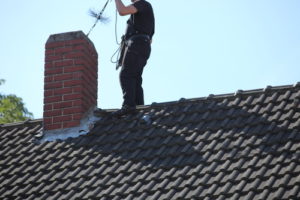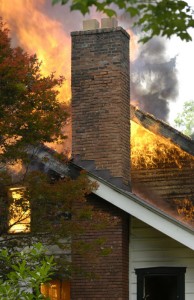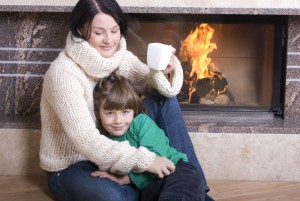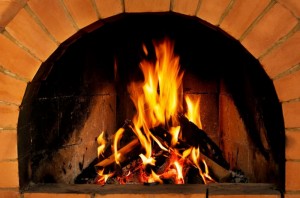Schedule a Holiday Chimney Cleaning for Santa!
Your holiday spirit may be dampened by only one thing: a dirty chimney. Not only can it be ugly, stinky, and unsafe, but it can also ruin the night of the Jolly Elf himself–Santa! Making sure that you get a chimney sweep scheduled now will mean a clean chimney for Christmas.
Why Clean the Chimney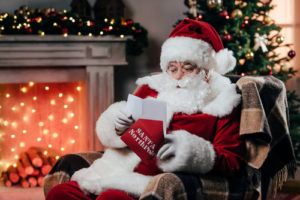
A dirty chimney is a dangerous chimney. The National Fire Protection Association (NFPA) and the Chimney Safety Institute of America (CSIA) recommend routine chimney maintenance for the safest and most efficient chimneys. A chimney works all winter long to vent your fires, and the fireplace is most popular during the holiday season. Don’t neglect yours! Schedule a chimney sweep to help your chimney work properly, to have the best and most beautiful fire possible, and the warmth you most want.
Soot and Creosote – If not cleaned away, soot and creosote can build up in the chimney interior, resulting in a dangerous mass that can ignite at any time. A chimney professional can clean these materials away before they become a problem, and can even remove glazed creosote without damaging the liner at all.
Unwelcome Odors – A dirty chimney will undoubtedly produce some unwelcome smells that may ruin your holiday gatherings and festivities. It may start with just the smell, but you soon may have a smoky fireplace that pushes smoke into your home more than heat.
Ashes, Stains, and Difficult Fires – Your hearth is the focal point of your home year-round, but during the holidays it is brought to new life! Your fireplace will be the backdrop to all of your holiday festivities, gatherings, and photo-ops. A good cleaning will remove ashes, prevent stains, and help your fireplace produce a beautiful, vibrant, and warm fire.
Call the Professionals
If you’re ready to invest in your home and your holidays by scheduling a chimney sweep, make sure you hire a certified professional who can get the job done right. At Chief Chimney Services, you can count on the best experience possible. We keep your home clean by using drop clothes, tarps, and a high-powered vacuuming system. We’ll clean your chimney system with brushes and tools that do the job while protecting your system from damage. We’ll also make sure you’re notified of any damages–minor or major–and recommended repairs or services.
It might be Santa in coming weeks, but it’s your family that depends on a well-working fireplace all winter long. Your chimney will only work as well as it’s treated, and we treat chimneys with the best at Chief Chimney Services.
Call and schedule a sweep with one of our CSIA-certified chimney sweeps today. Call 631-863-2460 or request an appointment online.

